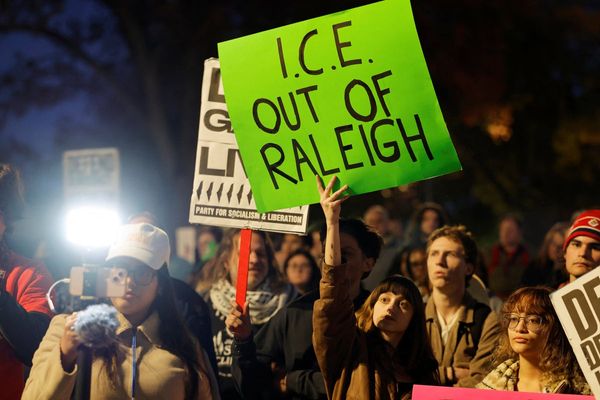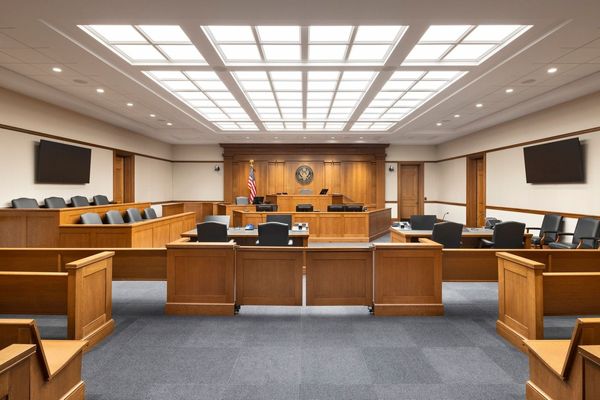
Hazlash is a funny-sounding Hebrew slang acronym. It means roughly “as you were”, or in a non-military idiom, “back to normal”. Within a few hours of Israel striking thousands of Hezbollah rocket launchers in Lebanon in the pre-dawn hours on Sunday, Israel’s wave of morning panic subsided and hazlash set in.
Back to normal wasn’t a given. As people woke up, the Israel Defense Forces (IDF) was issuing a set of civilian restrictions in preparation for escalation, and the defence minister declared a 48-hour state of emergency. Beaches and certain public recreational activities were closed all the way from the town of Rishon LeZion, just south of Tel Aviv, to Israel’s northern border. Ominously, Ben Gurion airport shut down. But by 7am, the airport was open again. That’s a big sign of hazlash. In fact nothing is normal, and nothing is at all funny.
The most obvious non-normality is that Israel and Hezbollah are no further from the precipice of war than they were before 4.40am on Sunday morning. Before that, Israel claimed it had assassinated one of Hezbollah’s top military commanders in the heart of Beirut, generating weeks of fear in Israel over Hezbollah’s response (a near-simultaneous assassination of the Hamas leader, Ismail Haniyeh in Tehran, presumed to be Israel’s work, prompted fear of an Iranian response as well). Before that, Hezbollah fired rockets at the Golan Heights that slaughtered a dozen children and teens, all Druze. Before that, and before that … all the way back to the pre-dawn hours of 8 October, when Hezbollah struck Israel in a burst of enthusiasm for Hamas’s 7 October terror attack. The long-term hostilities of course go much further back, and they extend to the longstanding enmity between Iran and Israel.
In between these spikes of violence, every day is a nightmare for civilians in the border regions – Israel’s north and Lebanon’s south. Tens of thousands have been evacuated from both sides. Others are running into shelters or closets, watching as projectiles crash into their homes, or losing their lives. Any day could be the Golan Heights massacre once again, and neither side is safe. The next disaster could spark the next cycle of retaliations; each retaliation could trigger the big Israel-Hezbollah war, which could in turn ignite additional fronts in the Middle East. If Iran gets involved, such a war could pull in big actors.
But even the return to an interim normal is very different from Israel before 7 October. The country has been at war since then, in Gaza. And as so often happens in war, the situation is exposing some of the worst divisions among the Israeli people, or between society and the state itself. It’s also creating new ones. “Normal” means returning to the so-far barren negotiations over Israeli hostages in Gaza and a ceasefire deal. Both Israel and Hamas have at points been intransigent – Hamas has in the past insisted on no-go terms for a deal, while Israel has reportedly been adding new terms. The leaders of both are busy blaming each other; Israelis, Palestinians and their global supporters are dutifully lining up on the correct side of the argument. Meanwhile, Israeli hostages and Palestinians in Gaza are dying every day.
Israelis are bitterly fighting each other over the fate of their own hostages. This is one of the ugliest political conflicts in the history of the country; polls show that a majority or a plurality of Israelis long for hostages to be returned, even in exchange for the release of Palestinian prisoners and a ceasefire. For many, their faith in the prime minister, Benjamin Netanyahu, has been permanently shattered by the scornful attitude they feel he has shown towards the Israeli hostages and the anguish of their families. Yet a substantial and powerful minority think the hostages should be seen as a necessary sacrifice to achieve the aims of the war – and the government clearly wants those aims to include the conquest and settlement of Gaza.
Hostage supporters suspect the government has written them off because they are secular, maybe even because of the leftwing reputation of the kibbutz communities in the south. There is an equally demoralising competition about which civilian population is worth more in the eyes of the government. Israelis who suffered the brunt of Hamas’s attack in the south feel so abandoned by the state that they have rejected government-led efforts to organise a one-year commemoration ceremony.
Israeli residents of the north were evacuated with government support, but many remain. They have begged the government to take action to restore security so they can all return. Some advocate a full-out war, others lean towards diplomacy. They have recently watched the government take its strongest military action only after a Houthi drone crashed into Tel Aviv, or when Hezbollah trained its rockets towards the centre of the country on Sunday morning. Israel struck fiercely at Yemen and at Lebanon respectively. The desperation of those in the north is boiling over; on Sunday, local council leaders from Israel’s northern border areas made a striking announcement that they were cutting off all contact with government authorities. “Don’t call. Don’t come. Don’t send messages. We have gotten by on our own until now. We will get along alone from now on,” they said.
Also on Sunday, Otzma Yehudit, the party of Itamar Ben-Gvir, the minister of national security, reportedly took out newspaper ads calling for the firing of the chief of Israel’s internal security agency. And at night, a “diplomatic source” – widely thought to be the prime minister himself – chided the IDF spokesperson for implying that hostage return was the sole aim of the war. Netanyahu generally speaks of several aims, including destroying Hamas’s military and governing capacity in addition to hostage release. Whoever the “diplomatic source” really was, Netanyahu’s actions prove he has other aims, though after more than 10 months, he has failed to achieve them. All this is the new hazlash.
The new normal is burrowing deep into Israel’s national psychology, which is becoming more primal and more provincial. We think in an all-consuming way about surviving the next escalation, about grief, phone batteries and the location of the nearest shelter. What little mental space is left goes to worrying about why the world hates Israel; there is nothing left for the possibility that Israel’s actions generate criticism (which doesn’t necessarily equate to hate, and may in fact be for Israel’s own good). Even less mental space remains for showing empathy towards civilians in Gaza.
The old normal was fundamentally flawed, and it provided the conditions for this new normal to surface. Israelis and Palestinians need a ceasefire to end this war and de-escalate the regional timebomb. Then they need to create an entirely new normal for the future.
Dahlia Scheindlin is a Tel Aviv-based political analyst and author of The Crooked Timber of Democracy in Israel
Do you have an opinion on the issues raised in this article? If you would like to submit a response of up to 300 words by email to be considered for publication in our letters section, please click here.







